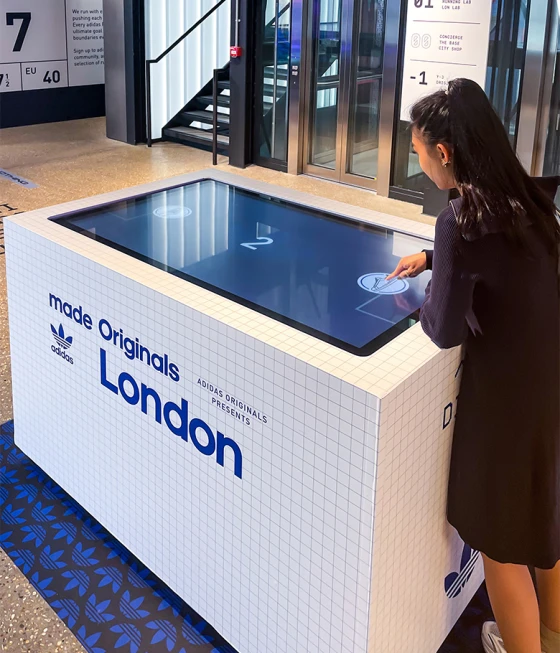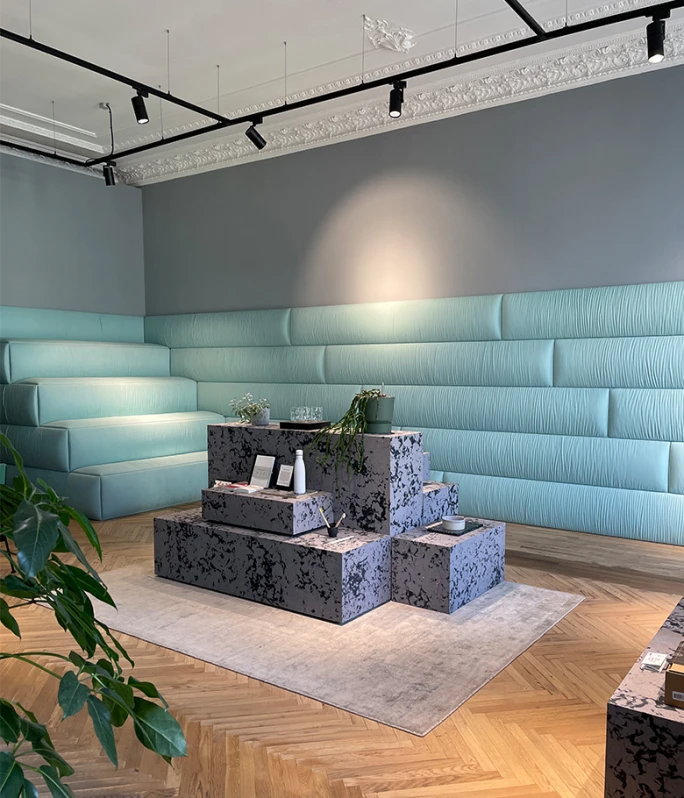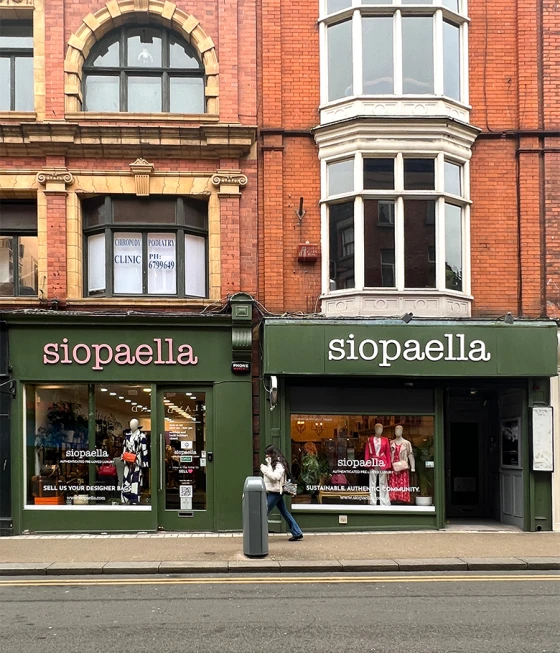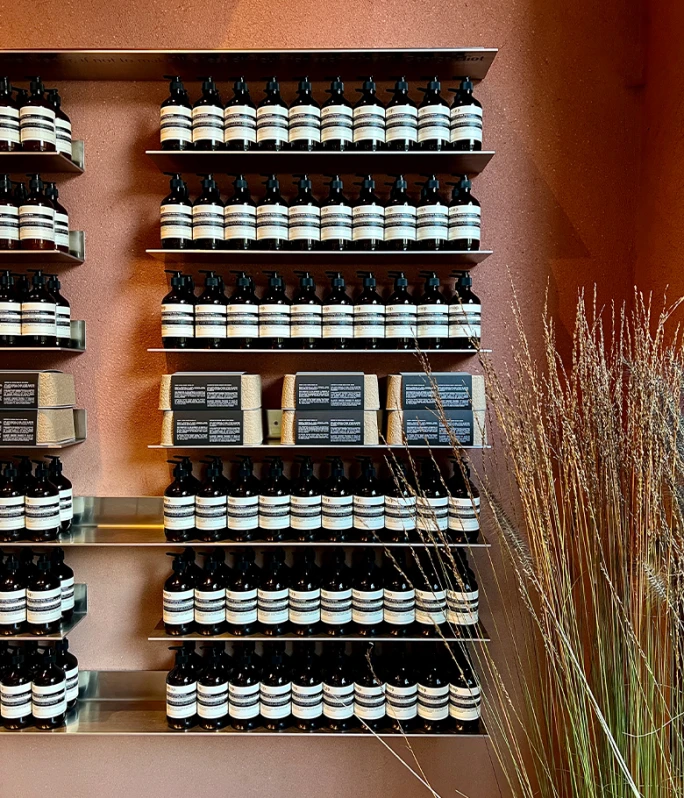Digital Interaction at Adidas Flagship Store, Oxford St., London
Retail Becoming Flexible for the Future
Insights
Adidas Flagship, Oxford Street, London
Physical retail is a place of opportunity for brands to make authentic connections with their customers. As humans we seek compelling experiences, something which has become more pronounced over the past three years and that cannot be found through online shopping.


The future retail store is beginning to look more towards experiences and authenticity. It is also focused on collaboration and flexibility of the physical space. Our insight looks at how some brands are beginning to reimagine their future and lead the way. Lynk & Co, Berlin.
Brands have the challenge of staying relevant in today’s fast-paced retail industry. There’s a sense of stagnation when customer loyalty declines. We tend to purchase items and develop brand loyalty where we’re given the best encounters. This commonly occurs when retail brands have switched from traditional retail settings to adaptable brand experiences.
Brands have the challenge of staying relevant in today’s fast-paced retail industry. There’s a sense of stagnation when customer loyalty declines. We tend to purchase items and develop brand loyalty where we’re given the best encounters. This commonly occurs when retail brands have switched from traditional retail settings to adaptable brand experiences.
Brands can nurture their relationships with their fanbases by offering unique services, collaborations, or location-based exclusive products. To accommodate these requirements, retail spaces must be flexible and multifunctional – an area that could transform into an event space, i.e., store by day or nightclub by night.
In today’s digital age, a potential strategy to encourage brand engagement is to find abstract brand values & transform them into physical, immersive environments. It could take the form of digital mediums, interactive screens, and Augmented Reality and Virtual Reality, to name a few.
However, the fact remains: Humans are social. Face-to-face engagement is everything. Sometimes things get missed on Zoom calls. A quick meeting can be a catch-all, or even better it can lead to more natural problem solving and new ideas. The remote workplace has highlighted the value that an office space can provide, and that it can lend a healthy perspective to its users.
This method becomes effective when you create experiences which allow consumers to pull information about the brand rather than the brand pushing it to them. A key consideration is to find the right balance between technology & human interaction. A more natural digital encounter can streamline the shopping experience, improve services and build on the participants brand knowledge. The ideal retail experience conjures a positive outcome that comes down to the unity between the online and digital experience and the team in store.

Siopaella is an excellent example of a brand that practices and encourages sustainability in the community through reselling of pre-loved luxury items. Siopaella, Wicklow St., Dublin

Aesop is at the forefront of sustainability with their strong ethos of using locally sourced materials and collaborating with designers with the same mindset that do small but effective interventions to the spaces. AESOP, Duke of York St. London.
We see a seismic shift in brands moving to small yet lofty spaces. Stand-alone boutiques have become increasingly desirable, especially in design-led and striking areas. The conventional practice of calculating how many products can fit in the store signals outdated brand values.
Some retail brands test the waters by opening a pop-up store before committing to a space to judge the brand’s longevity. These bite-sized boutiques are typically adventurous and offbeat, with an open-plan configuration that only showcases selected items but channels a designed environment that resonates with different clientele.
Small brands like Siopaella, in Dublin, is a great example of sustainability. It’s a shop that allows customers to shop and sell well known (used) designer luxury, bags, shoes, accessories, and clothes.
On visiting it feels local, and comfortable. The brand looks to embrace everyone and provides a welcome, helpful destination that has a “we care about you”, feel about it. Trust and authenticity are clear drivers for this brand. There is something heart-warming around this philosophy and I am guessing brings people back again and again.
To date Siopaella have recycled over 140,000 items, donated 100’s of kilos of clothing to charity and given over 20,000 in cash to non profit charities. Not bad for a small independent shop owner.
Brands such as Aesop stand firmly and confidently behind their claims of sustainability.
They launch new products “only in response to their client’s needs”. Research it seems, shows that meticulous care goes into production of their product, packaging, workforce and spaces.
No doubt their products and stores are vessels of great beauty, this is intentional and reinforces their manifesto “We believe unequivocally that well considered design improves our lives”. Their portfolio does show us that there is proof in the pudding, they do seek to produce sincere, intelligent design and continue to work with designers that genuinely care around sustainability. A great example of this is their Edgehill, Nashville store by Parisian designers Cigue. The designers paid tribute to the local culture, heritage and materials of the surrounding area and executed the design in a thought-provoking way.
For some sustainability is a box ticking exercise, for some it is a way of life. We may not always get it right, but if the intent is to strive to be ethical and produce designs with sincerity then we are on the right path.
Retail experiences that attract and convert consumers are progressive. They look to tell stories and immediately invite interaction as you walk into their store. These experiences build meaningful bridges within the community, promote brand awareness and boost sales.
Retail becoming flexible for the future requires a lot of different factors that should be considered and implemented in the best way possible.
Key takeaways:
Key takeaways:
Smart utilisation of technology
Experimenting in boutique-sized locations
Sustainable approach
Building communities